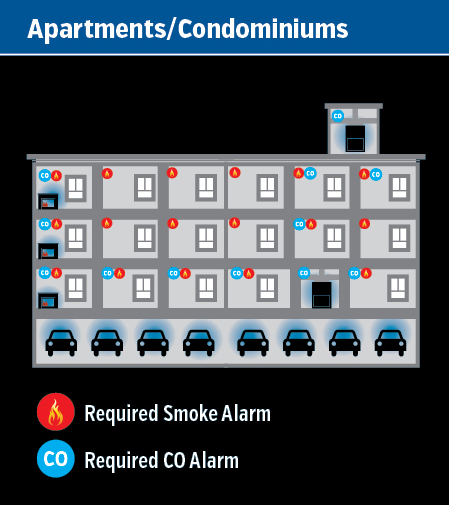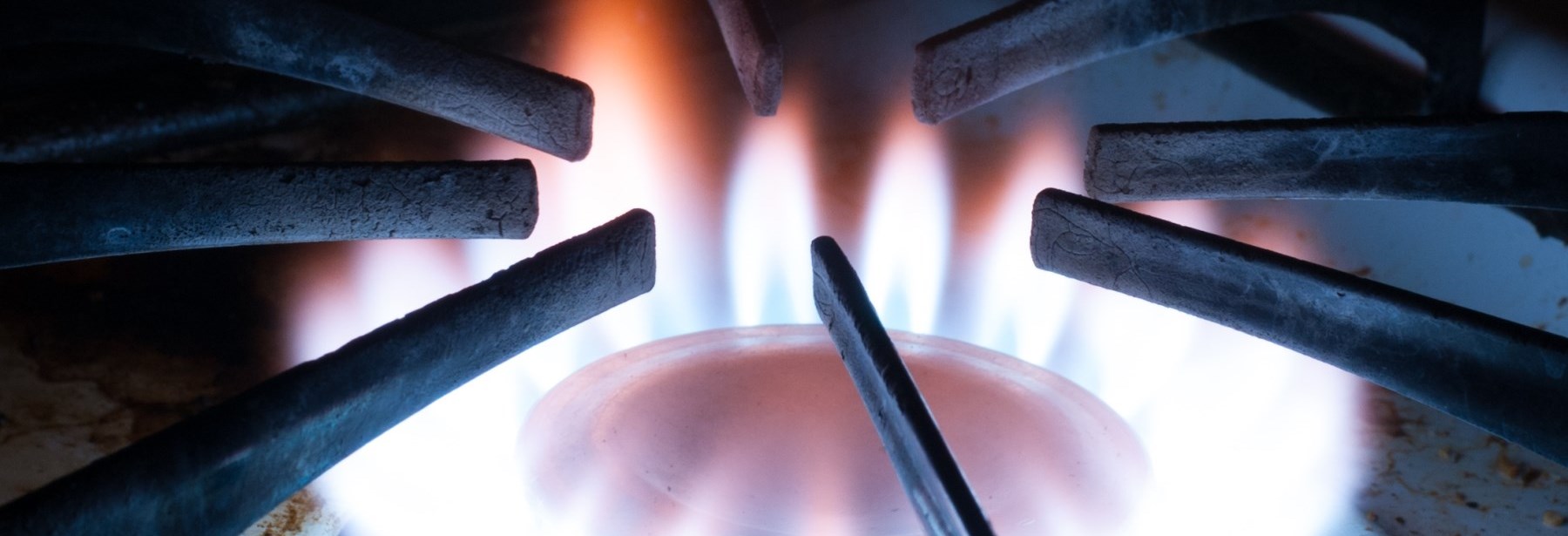
Carbon Monoxide (CO) is a poisonous gas that you cannot hear, see, smell or taste, also known as a “silent killer” made by the incomplete burning of fuels like natural gas, propane, heating oil, kerosene, coal, charcoal or wood due to inadequate air. In spaces like your home, cottage or vehicle, even a small amount of CO is dangerous and can be deadly.
It's the law
|
|

You are required to put CO alarms in each sleeping area in your home when you have fuel-burning appliances, heating systems, fireplaces or an attached garage. If you do not install CO alarms in your home, you could get a ticket or other penalty.
|
CO alarms in apartment buildings
|
|

In all multi-unit residential buildings with attached garages or service rooms, CO alarms are required near each sleeping area in each unit with a common wall, floor or ceiling with the garage or service room. The owner or property manager must install and maintain properly working CO alarms in your building.
|
CO safety checklist
|
- Have your fuel burning appliances in your home checked at least once a year
- Check that outside vents are clear and not blocked
- Never use a portable fuel-burning appliance, such as a barbeque inside your home
- Keep lots of space around space heaters
- If your home has a fuel-burning appliance such as a furnace, fireplace or gas stove, put a CO alarm near each sleeping area
- If your home has an attached garage, put a CO alarm near each sleeping area
- For extra protection, put a CO alarm on each level of your home
|
When your CO alarm sounds
|
- If your CO alarm sounds, do not think right away that it is a false alarm. If you are not having symptoms, reset the alarm and check to see if it sounds again
- If the alarm sounds a second time, have everyone get out of the home, leaving doors and windows closed and call 911 from a neighbour's phone or a mobile device
- Do not re-enter your home!
- The fire department will test for carbon monoxide in your home and let you know if it is safe to go back in or advise you that there is a problem
- If the alarm does not sound the second time, check for common reasons that may have caused the alarm such as dust or contact a qualified heating contractor to inspect and service your appliances
- Proper placement of a CO alarm in important. The human body is most vulnerable to the effects of CO during sleeping hours, so an alarm should be located next to all sleeping areas of the home. When sleeping areas are located in separate levels of the home, an alarm should be in each area
- For extra protection, put alarms near potential sources of CO like near a furnace, fuel-burning appliances or an attached garage
- Unlike smoke, which rises to the ceiling, CO mixes with air. To work properly, a CO alarm should not be blocked by furniture, draperies or other obstructions to normal air flow
- If a combination smoke carbon monoxide alarm is used, it should be located on the ceiling to ensure it will detect smoke effectively
|











